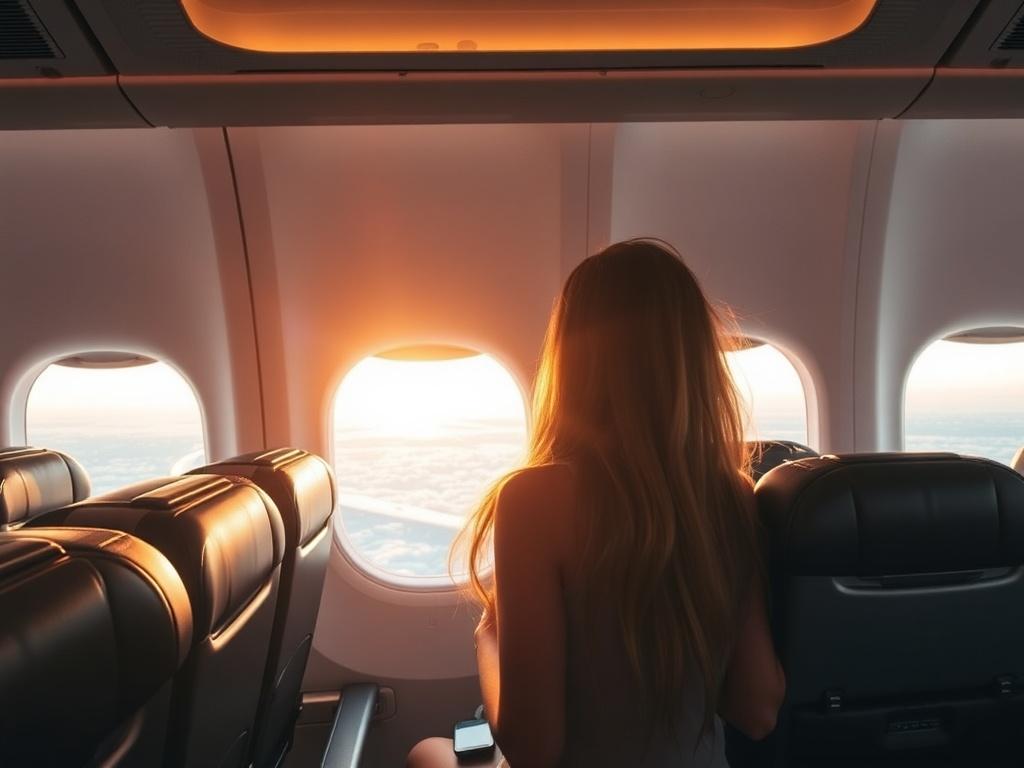
How to Travel with a Fear of Flying: A Friendly Guide to Soaring Above Anxiety
Traveling by plane can be an exciting and efficient way to explore new destinations or visit loved ones. However, for many people, the fear of flying can turn what should be a thrilling adventure into a stressful experience. If you find yourself asking, «How do I travel with a fear of flying?» you’re not alone. Millions of individuals face this challenge every year but successfully overcome it with the right mindset and strategies. This article will walk you through understanding your fear, practical steps to manage it, and helpful tips to make your flight more comfortable and enjoyable.
Understanding the Fear of Flying
Fear of flying, also known as aviophobia, is surprisingly common. It can range from mild anxiety to debilitating panic attacks, making it hard for many people to board a plane. The fear might stem from various reasons: a fear of heights, fear of enclosed spaces, concerns about turbulence, or past negative flying experiences. Sometimes, it simply arises out of the unknown, fueled by stories of disasters or loss of control.
Taking time to understand your fear is the first step to overcoming it. A useful way to start is by identifying the specific triggers or thoughts that cause your anxiety. Is it the takeoff, turbulence, or the idea of being far from home? Knowing this can help you tailor coping strategies more effectively.
Common Causes of Fear of Flying
Many people wonder why flying, one of the safest modes of transportation, causes so much distress. Here are some of the most common reasons:
- Fear of Heights: For some, being so high above the ground feels unnatural and frightening.
- Feeling Trapped: The confined space of the airplane and the inability to leave can cause claustrophobia.
- Turbulence: Unexpected bumps can make passengers feel like the plane is in danger.
- Lack of Control: Unlike driving a car, being a passenger in an airplane means handing over control to the pilots.
- Negative Past Experiences: Traumatic events related to flying can create lasting fear.
- Media Influence: News coverage of crashes and disasters can fuel anxiety.
Understanding these causes helps normalize your feelings and reminds you that fear stems from natural reactions, not weakness.
Preparing to Travel with a Fear of Flying
Preparation is key when it comes to learning how to travel with a fear of flying. The more prepared you feel, the less room anxiety has to grow. Below are some practical ways to mentally and physically ready yourself for your next flight.
Educate Yourself About Flying
One of the best ways to soothe nerves is knowledge. Understanding how airplanes work, the rigorous safety standards pilots follow, and how rare accidents are can give you confidence. Here are some interesting facts you might find reassuring:
| Fact | Explanation |
|---|---|
| Flying is incredibly safe | Statistically, commercial flying is one of the safest forms of travel, with a crash rate of approximately 1 in 11 million flights. |
| Pilots undergo intense training | Pilots train rigorously for years and practice handling emergencies regularly. |
| Turbulence is normal | Turbulence is like driving on a bumpy road; planes are designed to withstand much worse. |
| Planes have multiple safety systems | Modern aircraft have redundant systems, making mechanical failure extremely unlikely. |
Taking an online course or watching videos that explain these points can make flying feel less mysterious and scary.
Create a Flight Comfort Kit
Bringing familiar items that help you relax can minimize fear during the journey. Consider packing:
- Noise-canceling headphones or earplugs to block out engine noise
- A favorite book, music playlist, or podcast to distract your mind
- Comfortable clothing and a cozy scarf or blanket
- Healthy snacks and water to stay hydrated
- Breathing exercise guides or apps
Having these items on hand can provide a sense of control and comfort when anxiety strikes.
Choose Your Seat Wisely
Where you sit on the plane can significantly affect your comfort. Some seat tips include:
| Seat Location | Benefits |
|---|---|
| Front of the Plane | Less turbulence felt; quieter environment. |
| Aisle Seat | Easy to move around and access the restroom; less feeling of confinement. |
| Window Seat | Allows you to focus on the view or distract with sight; might feel more trapped for some. |
Choose what feels right to you, whether it’s minimizing movement restrictions or having visual distractions.
Techniques to Manage Anxiety Before and During the Flight
Experiencing some anxiety before flying is normal. The goal is to manage those feelings rather than eliminate them completely. Here are several proven methods to stay calm throughout your travel.
Practice Deep Breathing and Mindfulness
One of the simplest and most effective tools is deep breathing. Taking slow, controlled breaths can help lower your heart rate and reduce panic. A basic exercise is:
- Inhale slowly through your nose for 4 seconds.
- Hold your breath for 4 seconds.
- Exhale gently through your mouth for 6 seconds.
- Repeat until you feel calmer.
Pairing breathing with mindfulness—focusing entirely on the present moment—can prevent your mind from racing into worst-case scenarios.
Use Visualization Techniques
Visualizing a peaceful place or imagining yourself calmly arriving at your destination can redirect your thoughts from fear to comfort. Picture the whole journey going smoothly and focus on positive outcomes.
Listen to Calming Music or Podcasts
Create a playlist designed to sooth your nerves. Studies show that music can reduce anxiety and lower stress hormones. Alternatively, engaging podcasts or audiobooks can distract your mind from anxious thoughts.
Consider Professional Help or Fear of Flying Courses
If your fear feels overwhelming, seeking professional help is a smart choice. Therapists specializing in anxiety or phobias can provide cognitive-behavioral therapy (CBT) techniques to reshape your thoughts about flying. Many airlines also offer fear of flying workshops or courses, which include simulated flights and expert support.
What to Do at the Airport
The airport itself can be a source of tension before boarding a plane. Here are ways to stay calm and prepared:
- Arrive early to avoid rushing and stress.
- Keep all documents and boarding passes handy to avoid last-minute panic.
- Practice your breathing exercises while waiting.
- Stay hydrated and avoid excessive caffeine or alcohol, as they can worsen anxiety.
- Talk to airline staff if needed; they are usually understanding and can provide reassurance.
Having a plan at the airport can prevent escalation of fear before even getting on the plane.
During the Flight: Staying Calm and Comfortable
Once aboard, keeping your anxiety in check is crucial for a more pleasant flight:
Stay Hydrated and Eat Lightly
Drinking water and eating small, healthy snacks help maintain your energy and prevent irritability or lightheadedness, which can worsen anxiety.
Inform the Flight Attendants
Letting the cabin crew know about your fear can be a huge relief. They are trained to assist anxious passengers and can check on you during the flight to offer reassurance.
Engage Your Mind
Use your comfort kit’s books, music, or puzzles to stay distracted and mentally busy. Time tends to pass faster when you’re focused on something enjoyable.
Acknowledge Your Feelings
Remember that it’s okay to feel scared sometimes. Accepting your feelings without judgment can reduce their impact. Remind yourself that the fear doesn’t define your experience.
Medications and Natural Remedies
Some travelers consider medication as part of their strategy. While medication can help, it’s crucial to consult a doctor before taking anything. Options include:
- Prescription anti-anxiety medications: Short-term use under doctor supervision.
- Over-the-counter remedies: Such as mild sedatives or melatonin to help with sleep.
- Natural supplements: Like valerian root, chamomile, or lavender, though efficacy varies.
Remember that medication should complement, not replace, coping techniques and preparation.
Success Stories: Real People Who Fly Despite Fear
Hearing how others overcome their fear can be inspirational. For example, Sarah used to avoid flying entirely. After reading about airplane mechanics, joining a fear of flying course, and practicing mindfulness, she managed to take a cross-country flight confidently. John, who suffers from panic attacks, found that informing flight attendants and using calming music were game changers on long-haul trips.
Their stories show that fear of flying does not have to hold you back. With effort and the right approach, you can take to the skies with peace of mind.
Conclusion
Traveling with a fear of flying is a journey in itself, but it’s one that many people successfully navigate every day. Understanding your fear, educating yourself, preparing physically and mentally, and adopting calming techniques make a significant difference. Whether through breathing exercises, seat selection, or professional guidance, managing flying anxiety is within your reach. Remember, you are not alone, and fear doesn’t have to stop you from exploring the world. Embrace your courage step by step, and soon enough, flying will feel less like a challenge and more like the exciting adventure it truly is. Safe travels!




